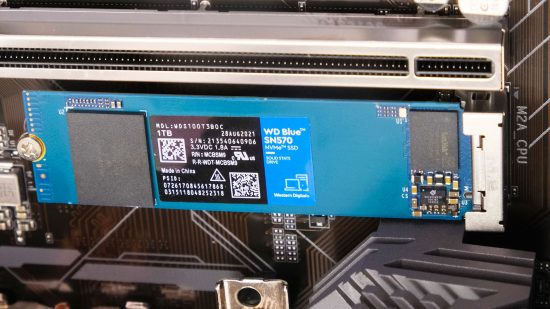Our Verdict
The WD Blue SN570 is a fantastic, well-priced all-rounder of an SSD, as long as you won’t be writing massive files regularly. If you need to save some money, this drive will serve most people's needs fine for a very generous price.
- Excellent value
- Competition-busting speeds on PCIe 3.0 bus
- Now available in 2TB capacity
- Poor write speeds with extremely large files
- PCIe 4.0 and 5.0 SSDs have higher sequential speeds
- No DRAM
If you don’t specifically need the massive sequential speeds of the latest PCIe 4.0 and 5.0 SSDs, PCIe 3.0 SSDs such as the WD Blue SN570 generally offer all the speed you need for much less money. This budget SSD builds upon its predecessor, the SN550, with much faster speeds, but thankfully has an equally generous price.
The Blue SN570 is already on our best gaming SSD guide as the best cheap SSD. While its price may be cheap, though, you don’t sacrifice too much by opting for this SSD over many more expensive drives. It’s nearly as quick as the fastest PCIe 3.0 SSDs we’ve tested.
Why you can trust our advice ✔ At PCGamesN, our experts spend hours testing hardware and reviewing games and VPNs. We share honest, unbiased opinions to help you buy the best. Find out how we test.
WD Blue SN570 specs
These are the WD Blue SN570 specifications:
| Interface | 4x PCIe 3.0 |
| Protocol | NVMe |
| Form factor | M.2 2280 |
| Capacities | 250GB, 5009GB, 1TB (tested), 2TB |
| Formatted capacity | 931GB (1TB version) |
| Controller | WD in house |
| Max read speed | 3,500MB/s |
| Max write speed | 3,000MB/s |
| Endurance rating | 600TBW (1TB version) |
| Warranty | Five years |
| NAND | BiCS 5 112-layer 3D TLC NAND |
Since the WD Blue SN570 launched, WD has also added a new model with a 2TB capacity, which is great to see. The range used to top out at the 1TB model (which we’re testing here), but the new affordable-but-speedy 2TB drive will be very useful for users who need a lot of storage space, especially when the drives currently cost just $119.99.
While the SN750’s basic design is similar to that of the WD Blue SN550, being a DRAM-less SSD using an in-house WD controller with triple-level cell (TLC) NAND flash memory, the faster speeds are likely due to the use of different flash memory chips. While the SN550 used BiCS 4 96-layer 3D TLC, the new SN570 uses BiCS 5 112-layer 3D TLC NAND flash memory.
What this means in plain English is that the SN570 is significantly quicker than the SN550. WD claims that the SN570 now has a peak sequential read and write speed of 3,500MB/sec and 3,000MB/sec, respectively, while the older SN550 sits at 2,400MB/sec and 1,950MB/sec – that’s a big speed jump of 43% on the read speed.
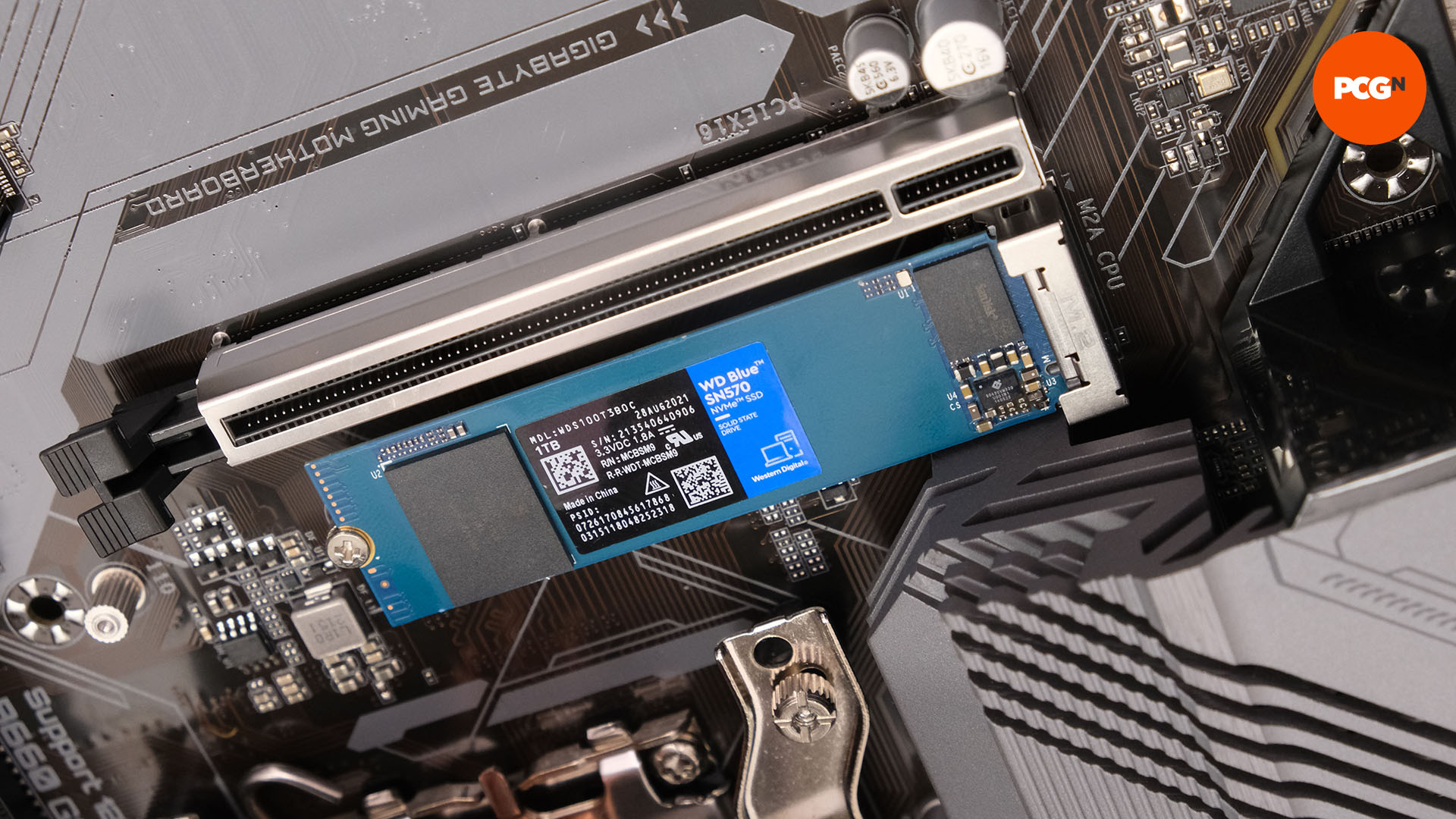
Those are some significant speed boosts given the SN570’s similar pricing to its predecessors, and these speeds are similar to those found on the faster PCIe 3.0 SSDs available today.
The absence of DRAM to reduce wear on the flash memory doesn’t seem to have impacted endurance either. We’re not looking at the huge TBW ratings of WD’s Red SSDs, but at 600TBW for the 1TB model, you’re not losing out compared to the competition. For example, the 1TB Samsung 980 has the same rating.
WD Blue SN570 performance
Suspecting we’d get slower write speeds with larger files, we threw a 100GB file at the WD Blue SN570 and, sure enough, after writing 15GB or so the speed plummeted to around 500MB/s. However, even dealing with many tens of gigabytes at once is an extremely rare situation for most of us. Meanwhile, CrystalDiskMark’s sequential tests saw the SSD hit numbers closer to the specifications, with a read speed of 3,549MB/s, and a write speed of 3,195MB/s.
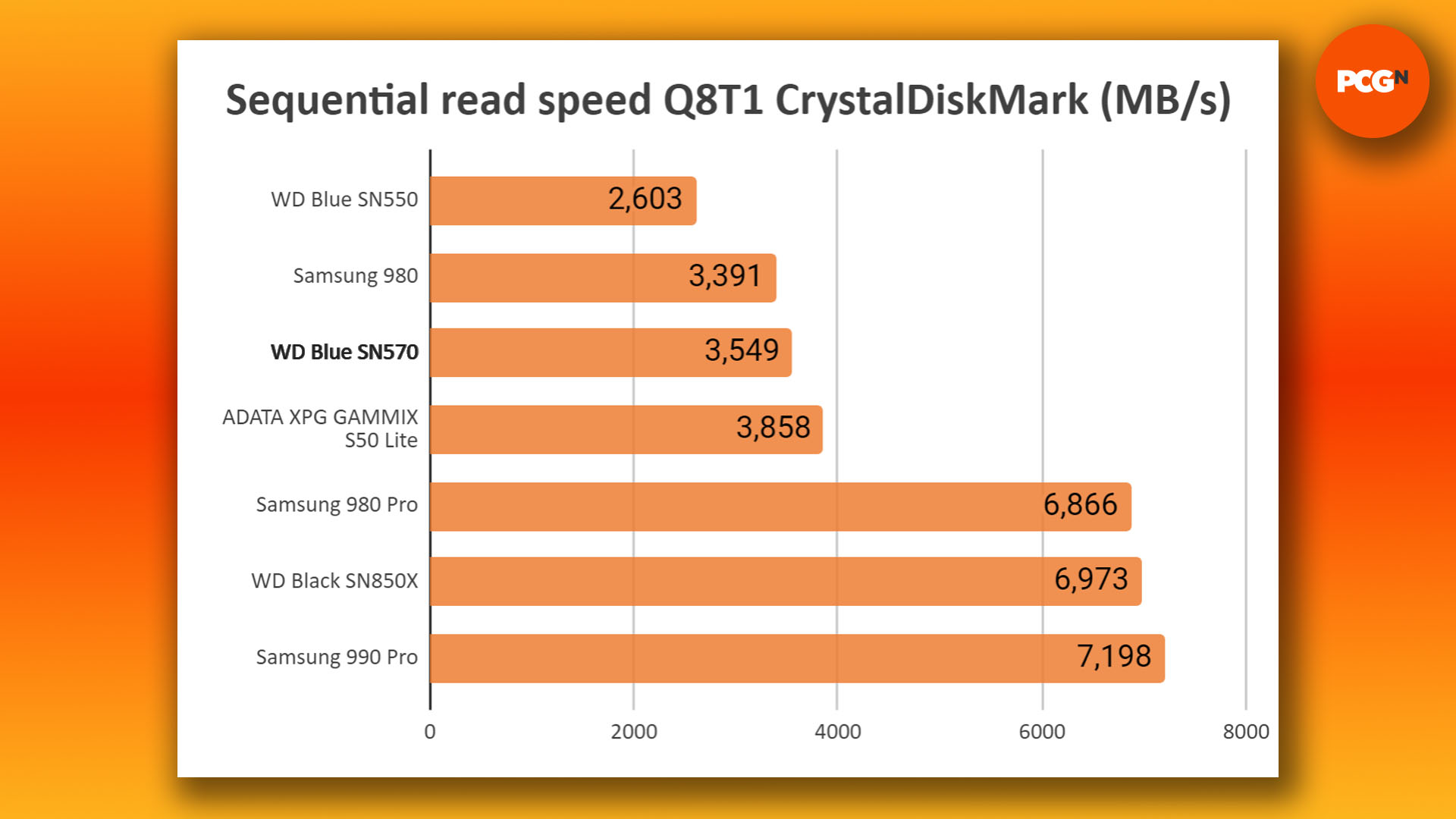
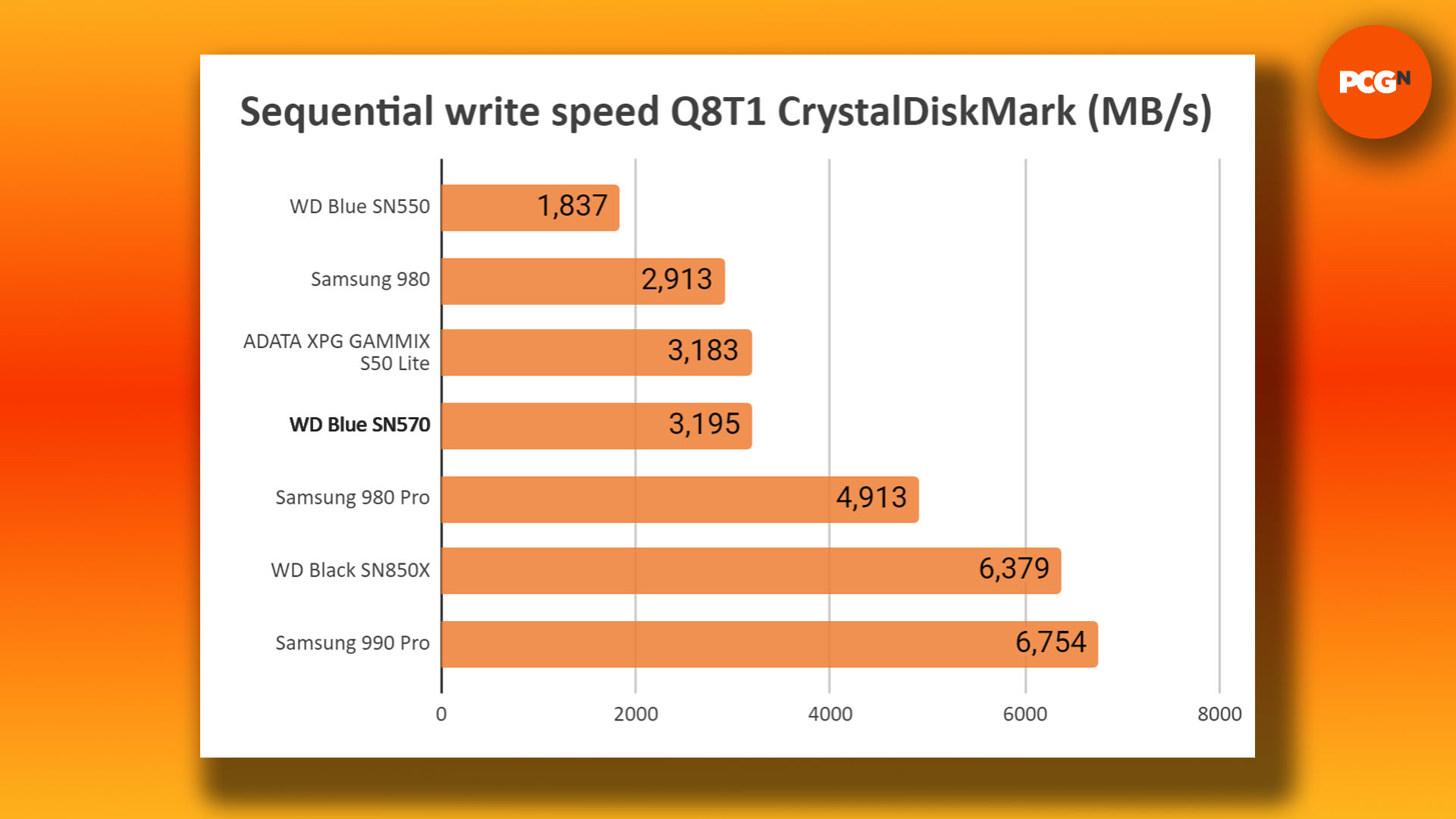
The random 4K performance with a queue depth of 32 and four threads saw read and write speeds of 1,890MB/s and 1,723MB/sec respectively, both of which are faster than the results from the Samsung 980 and WD Blue SN550.
What’s more, these speeds are faster than those of the ADATA XPG GAMMIX S50 Lite, which uses the ostensibly faster PCIe 4.0 interface – this just goes to show that the interface doesn’t tell the whole story when it comes to SSDs.
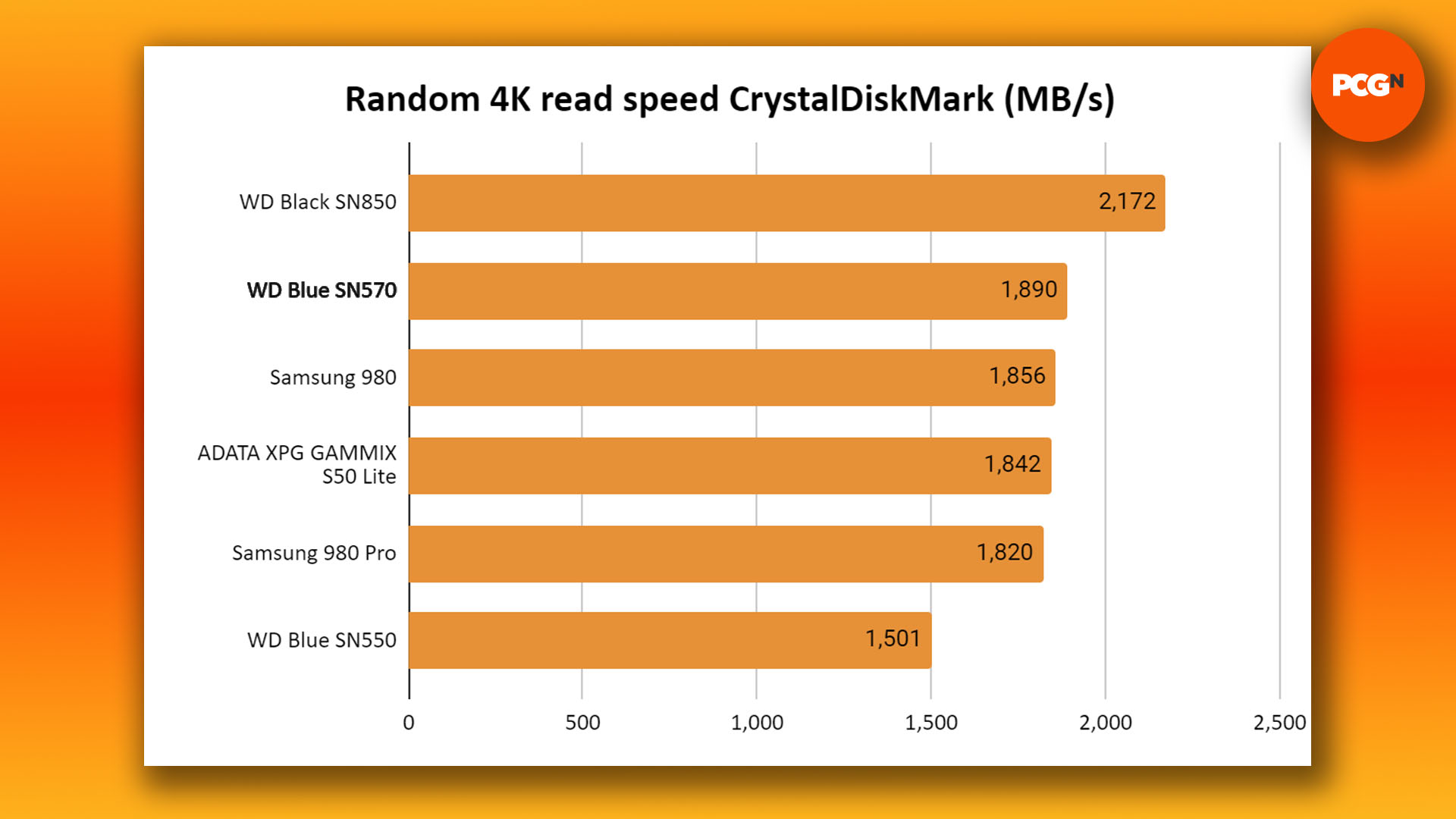
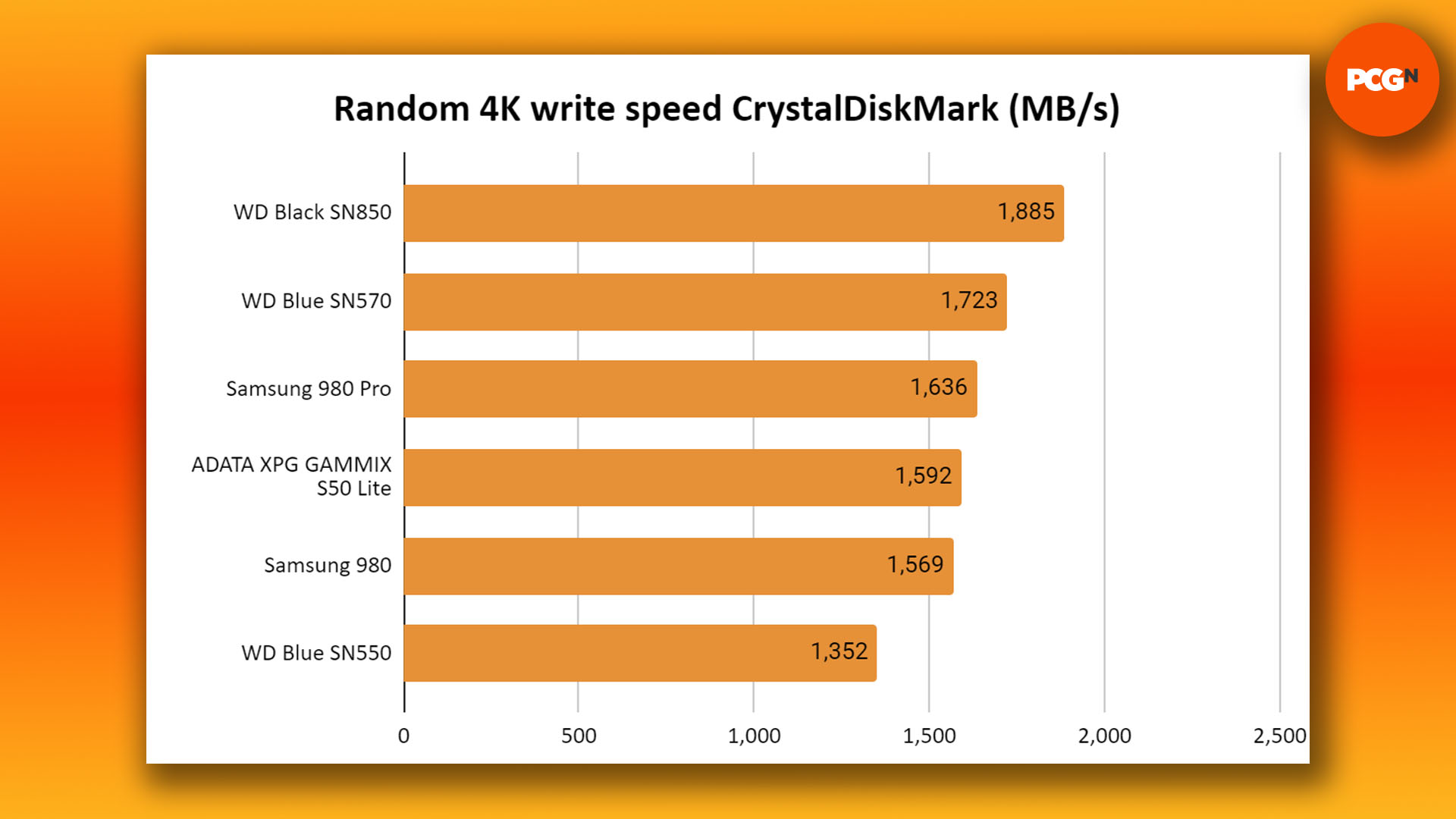
We didn’t see the WD Blue SN570’s temperature rise above 53°C in our stress test either, and that’s without any added heatsinks, so it runs relatively cool compared to many other SSDs.
WD Blue SN570 price
Thanks to its very cheap price, the WD Blue SN570 offers fantastic value for money, particularly when it comes to large capacities. If you want 2TB of storage space, but can’t afford the big bucks for the latest PCIe 4.0 and 5.0 drives, then the WD Blue SN570 offers a great compromise.
Most importantly, you don’t sacrifice an enormous amount of speed by opting for this cheaper drive. It’s not far off the pace of the very fastest PCIe 3.0 drives, and it even gives some PCIe 4.0 SSDs a run for their money. You can save yourself some money by opting for the WD Blue SN570, but you also don’t make any massive sacrifices in the process.
WD Blue SN570 conclusion
With a very reasonable price and performance that matches or betters more expensive SSDs, the WD Blue SN570 is a fantastic SSD for the money. It offers some of the fastest speeds the PCIe 3.0 interface has to offer, and the only area it comes up short is when you’re writing tens or hundreds of gigabytes at once – a job most of us do rarely.
To top it all off, the addition of a 2TB option to the stable means you can now get loads of fast solid state storage for a very cheap price. If you don’t move huge files around on a regular basis, this is a great SSD for the money.
Alternatives
Samsung 980
Despite having the same number in its name as the Samsung 980 Pro, the vanilla 980 is actually a PCIe 3.0 drive, rather than a PCIe 4.0 drive. It’s still pretty fast, though, and you can sometimes pick it up cheaper than the WD Blue SN570 when it’s on offer. The WD drive is generally slightly quicker in our tests, but there’s not a lot in it.
WD Black SN850X
Thanks to some dramatic price cuts since its original launch, the WD Black SN850X now offers fantastic value. It’s capable of some very fast file transfer speeds, and it also has a nifty game mode that we found genuinely makes games load quicker. It’s more expensive than the Blue SN570, and you arguably won’t see the benefit of its extra speed in a lot of cases, but this is a great drive if you can afford it.
